Buy Brinjal Seeds from various brands at DesiKheti:
Buy Advanta Brinjal Seeds Online
Buy Ankur Seeds Brinjal Seeds Online
Buy Ashoka Seeds Brinjal Seeds Online
Buy Bioseed Brinjal Seeds Online
Buy Chia Tai Brinjal Seeds Online
Buy Dutch Agriseeds Brinjal Seeds Online
Buy East West Brinjal Seeds Online
Buy Esha Brinjal Seeds Online
Buy Fito Brinjal Seeds Online
Buy HM Clause Brinjal Seeds Online
Buy Indo American Seeds Brinjal Seeds Online
Buy JK Seeds Brinjal Seeds Online
Buy Kalash Brinjal Seeds Online
Buy Kaveri Seeds Brinjal Seeds Online
Buy Known You Brinjal Seeds Online
Buy Mahyco Brinjal Seeds Online
Buy Nirmal Seeds Brinjal Seeds Online
Buy Nuziveedu Seeds Brinjal Seeds Online
Buy Pahuja Seeds Brinjal Seeds Online
Buy Rasi Seeds Brinjal Seeds Online
Buy Sarpan Seeds Brinjal Seeds Online
Buy Seminis Brinjal Seeds Online
Buy Sungro Seeds Brinjal Seeds Online
Buy Taiyo Brinjal Seeds Online
Buy Tokita Brinjal Seeds Online
Buy VNR Brinjal Seeds Online
Buy Welcome Seeds Brinjal Seeds Online
Brinjal is also known as Eggplant or Aubergine. Brinjal is a staple in Indian kitchens and is a Popular vegetable worldwide. Brinjal is Known as the "King of Vegetables." Brinjal has glossy purple skin. The rich nutritional profile has earned Brinjal a place of honour in many dishes. Brinjal originates from the Indo-Burma region. Brinjal is known for absorbing flavours, making it a versatile ingredient in various culinary traditions.
Brinjal is scientifically named Solanum melongena. Brinjal belongs to the Solanaceae family. In India, Brinjal is one of the most commonly grown vegetables. Brinjal is Known by different names across India, such as Begun, Ringna, Baingan, Badane, Waangum, Vange, Vazhuthana, Kathiri, and Vankaya.
Begun is not just a culinary delight but also a powerhouse of nutrients. Vankaya is packed with calcium, phosphorus, iron, and Vitamin B. Moreover, Vazhuthana is valued for its medicinal benefits, particularly the ability of Vankaya to lower cholesterol, thanks to its polyunsaturated fatty acids. Begun is also known to aid in liver health and is used in various traditional remedies, including toothache treatments.
Beyond cooking, Baingan is a key ingredient in pickles and the dehydration industry. Even the green leaves of the Baingan plant are treasured for their appetizing, aphrodisiac, and heart-strengthening properties.
Climate for Brinjal Cultivation
Brinjal is a warm-season crop that thrives in long periods of warm weather. The optimal temperature for growing Baingan plant growth ranges between 22°C to 33°C. However, the Begun plant is susceptible to frost. Exposure of the Baingan plant to extremely cold temperatures can cause the ovaries to split, leading to the formation of abnormal Vankaya fruits.
Generally, late-maturing varieties of Baingan are more tolerant of cooler temperatures than early varieties. Baingan Plant is also sensitive to heavy rainfall, especially during flowering and fruit setting, which can adversely affect the crop.
Soil for Baingan Farming
Brinjal is adaptable to a wide range of soils. However, the soil should be deep, fertile, and well-drained for the best growth of Baingan plants. The ideal soil pH for Begun cultivation is between 5.5 to 6. While light soils are suitable for early Baingan crops, heavier soils are better for achieving higher yields.
Land Preparation for sowing Brinjal Seeds
Preparing the land for Vazhuthana involves tilling the soil to a fine texture through 4-5 rounds of ploughing. Incorporating well-decomposed Farm Yard Manure (FYM) at a rate of 25 tons per hectare during the final ploughing is recommended to enrich the soil and promote healthy Baingan plant growth.
Brinjal Seeds and Propagation Material
Selection of a Brinjal Variety
Choosing the right Brinjal variety is crucial, as preferences for colour, size, and other characteristics can vary significantly from region to region. A Baingan variety that is highly valued in one market may not be as desirable in another. For successful cultivation, selecting a Vazhuthana variety that meets local market demands is essential.
Additionally, Brinjal varieties with higher resistance to pests and diseases, sturdy growth habits, high yields, soft flesh, low seed content, low solanine levels, and attractive, glossy skins are generally preferred for commercial farming of Baingan.
Procurement of Brinjal Seeds
It is important to procure Brinjal seeds from reliable and authentic sources. At Desikheti, we offer a wide selection of high-quality Brinjal seeds that can be conveniently delivered to your doorstep.
Brinjal Seed rate
100 g of Brinjal seeds/acre of land.
Brinjal Seed Treatment
Hybrid and open-pollinated (OP) Brinjal seeds from the private sector are usually pre-treated with chemicals. However, if the Brinjal seeds are untreated, it's advisable to treat them with Trichoderma viride at 4 g/kg of Brinjal seeds or Pseudomonas fluorescens at 10 g/kg of Brinjal seeds to protect them from diseases and enhance germination.
Time of Sowing Brinjal Seeds
Begun is a versatile crop grown across different seasons, depending on the region.
In the plains, Brinjal can be cultivated in three main seasons:
- Summer crop: Sow Brinjal seeds during February-March.
- Kharif crop: Sow Brinjal seeds in March-April.
- Rabi crop: Sow Brinjal seeds in October-November.
Brinjal seeds are typically sown in hilly regions in April-May, with Brinjal seedlings transplanted in May-June.
Method of Sowing Brinjal Seeds
Begun is primarily grown as a transplanted crop. The process begins with sowing Brinjal seeds in nursery beds. These beds are prepared by mixing equal parts of sand and well-decomposed farmyard manure with the soil. Raised beds, 60-75 cm wide and of suitable length, are then created.
Brinjal seeds are sown in lines spaced 5 cm apart. Cover the Brinjal seeds with a thin layer of soil and top them with paddy straw or dried grass. Brinjal seed germination usually occurs within 5-7 days. Once the Begun seedlings reach a height of 8 to 10 cm and have developed 2 to 3 true leaves, they are ready for transplanting.
Before transplanting, the Vankaya seedlings are hardened by withholding water for 4 to 6 days. Light irrigation is applied on the day of nursery pulling, and care is taken to lift the Vankaya seedlings without damaging the roots. During transplanting, the soil around the Vazhuthana seedlings should be pressed firmly.
The spacing for transplanting depends on the variety of Vankaya, soil fertility, and climatic conditions. Long-fruited Begun varieties should be spaced at 60 x 60 cm, while round-fruited varieties are best spaced at 75 x 75 cm.
During the rainy season, growing Baingan on raised beds or ridges is advisable. Small pits are dug on sloping land to prevent soil erosion, and Vazhuthana seedlings are planted in these pits.
Nutrient Management for Growing Begun
Begun is a long-duration crop, occupying the field for 6 to 8 months. Proper nutrient management is crucial, as low fertility can negatively affect Baingan flower and fruit production. Fertiliser needs vary by variety, season, and soil type, but a general recommendation is to incorporate about 25 tons per hectare of well-decomposed farmyard manure (FYM) during the last ploughing.
An NPK (Nitrogen, Phosphorus, Potassium) ratio of 100:80:60 kg per hectare is typically applied. Half of the nitrogen, along with the full amounts of phosphorus and potassium, should be applied just before transplanting Vankaya seedlings.
The fertiliser is to be mixed and applied along one side of the ridges as a band and mixed with the soil. The remaining nitrogen can be applied in two or three splits at intervals of 30 and 45 days after transplanting Baingan seedlings, depending on soil conditions.
Irrigation Management for Vankaya Cultivation
Baingan has shallow roots, which makes it dependent on frequent irrigation. During the summer, the Begun crop should be watered every 3 to 4 days, while in the winter, irrigation is needed every 12 to 15 days. Irrigation is generally not necessary during rainy periods.
The furrow system is commonly used for irrigation in Baingan crops, but drip irrigation is highly recommended as it improves water use efficiency and helps reduce weed growth.
Weed Management for Vazhuthana Farming
Effective weed management is vital for Begun, especially during the early stages of Baingan Plant growth. Manual weeding is commonly practised and usually involves 2-3 light hoeing or earthing-up sessions. This not only removes weeds but also improves root aeration and provides support to Vankaya Plant.
Shallow cultivation is preferred to control weed growth, as deep cultivation can damage Baingan plant roots and expose moist soil to the surface. Using black polythene mulches is also an effective strategy for suppressing weeds and promoting better Begun plant growth.
Pest and Disease Management in Brinjal Cultivation
Common Pests of Brinjal
Epilachna Beetle (Spotted Leaf Beetle) – Epilachna vigintioctopunctata
- One of the most common pests in Begun, the Epilachna Beetle, is known for its destructive feeding habits.
- The small, yellowish grubs begin feeding on the Baingan leaf surface as soon as they hatch, leaving behind the veins and veinlets.
- As they mature into cream-yellow grubs, they become voracious feeders, primarily targeting the underside of Begun leaves. This feeding behaviour leads to a lace-like appearance on the damaged leaves, a condition known as leaf skeletonization.
- Severe infestations can cause the Baingan leaves to dry up, giving the plant a sickly appearance.
2. Brinjal Shoot and Fruit Borer – Leucinodes orbonalis
- The Brinjal Shoot and Fruit Borer is one of the most damaging pests for Begun crops.
- During the vegetative stage, the caterpillars bore into the petioles, midribs, and young Baingan plant shoots, leading to drooping and wilting.
- In the fruiting stage, they enter the Begun fruits, creating small, initially invisible holes that later enlarge and become filled with excreta.
- Infested Baingan fruits are unfit for consumption or sale, and infestations can impact up to 70% of a crop.
3. Brinjal Stem Borer – Euzophera perticella
- Unlike other pests, the Brinjal Stem Borer exclusively targets the stem of the Baingan plant, specifically stems thicker than a pencil.
- The caterpillar enters the Begun stem near the ground level, usually at a leaf or branch axil, and seals the entry point with excreta and frass.
- This pest is more common in older Baingan plants, leading to wilting branches and stunted growth. In severe cases, the entire Begun plant may wilt and die.
4. Brinjal Mealy Bugs – Centrococcus insolitus
- Brinjal Mealy Bugs are typically found on the undersides of leaves, as well as on tender Begun plant shoots and stems.
- These pests suck sap from the Baingan plant, leading to discoloration and stunted growth.
- Affected branches often dry up completely, which can severely impact the overall health of the Baingan plant.
5. Aphids – Aphis gossypii
- Aphids are small, sap-sucking insects that often form colonies on the undersides of tender Vankaya plant leaves.
- Their feeding causes the Baingan leaves to crinkle, curl, and become distorted. Aphids reproduce quickly through parthenogenesis, leading to rapid population growth.
6. Leaf Hoppers – Amrasca biguttula biguttula
- Leaf Hoppers are notorious for causing "hopperburn" in Begun plants. Both the nymphs and adults suck sap from the undersides of Baingan leaves, causing them to curl downward and become crinkled.
- This stunts the growth of the plant and can severely impact Begun crop yields.
7. Brinjal Lace Wing Bug – Urentius hystricellus and U. sentis
- These pests are specific to Brinjal and are known for their sap-sucking behaviour.
- Nymphs and adults primarily feed on the upper surfaces of Baingan leaves, leading to yellow patches.
- The affected Begun leaves may become covered in excreta, shrivel, dry up, and eventually fall off. In severe cases, entire Begun plants may dry out completely.
8. Brinjal Leaf Webber – Psara bipunctalis
- The Brinjal Leaf Webber is a greenish caterpillar that can grow up to 25 mm in length.
- It webs Baingan leaves together and feeds on them in groups, causing significant damage to the foliage.
9. Red Spider Mite – Tetranychus telarius
- Red Spider Mites are tiny pests that suck sap from the leaves of Begun plants.
- Their feeding causes characteristic blotches that first turn whitish and then develop into brown patches. Eventually, the entire Baingan leaf may discolour and dry out.
- Infestations are more common during warm, dry months.
Common Diseases of Brinjal
Damping Off – Pythium aphanidermatum
- Damping off is a serious disease affecting Baingan seedlings.
- It starts with a brown discolouration at the lower part of the Begun stem, which becomes soft and causes the Vazhuthana seedlings to collapse at the soil level.
- This disease can lead to up to 60% losses in Begun seedlings both in nurseries and fields.
- Also known as collar rot, water rot, or stem rot, damping off can result in up to 90% mortality (pre-emergence and post-emergence seedling mortality) if Baingan plants are infected early.
Phomopsis Blight and Fruit Rot – Phomopsis vexans
- This disease is particularly severe in tropical and subtropical regions. It affects Begun plants from seedlings to mature fruit.
- In the Vazhuthana seed bed, it causes damping off, while on leaves, it creates circular or irregular grey to brown spots with light centres. Affected Baingan leaves turn yellow and die.
- Pale, sunken spots appear on Begun fruits, eventually covering the entire fruit and leading to internal rot and mummification.
Bacterial Wilt – Pseudomonas solanacearum
- Bacterial wilt is a significant problem in Vankaya cultivation. It causes wilting of the foliage and collapse of the Baingan plant.
- Symptoms include gradual yellowing, withering, and drying of the Begun plant or its branches.
- The vascular tissues of the roots and stems turn brown, and a whitish bacterial exudate may be seen when the Vankaya stem is cut.
Cercospora Leaf Spot – Cercospora melongenae
- Cercospora leaf spot primarily targets the Baingan leaves, leading to premature defoliation.
- Symptoms include large, irregular, or circular brown spots with grey centres on the Begun leaves.
- This disease can also affect the Baingan fruits, further reducing yield.
Alternaria Leaf Spot – Alternaria melongenae
- Alternaria leaf spot is a major disease affecting Baingan leaves. First observed in Guntur district in 2000, it is more prevalent during the rabi season.
- The disease manifests as brown, irregular spots with concentric rings. These spots can merge into larger necrotic patches.
- Begun Fruits can also be affected, showing large necrotic sunken spots that turn yellow and drop off.
Fusarium Wilt – Fusarium solani
- Fusarium wilt is a severe vascular disease that can cause distinct loss to the Vankaya crop.
- Symptoms include flaccid Baingan leaves that hang down and turn chlorotic.
- Brown streaks are visible under the bark of the Begun stem, and roots may exhibit rotting.
- Whitish fungal growth often appears at the base of the Baingan stem and roots.
Little Leaf – Phytoplasma
- Little leaf disease, caused by phytoplasma, leads to general chlorosis and reduced Vankaya plant height.
- Infected plants have abnormally small Baingan leaves and shortened internodes, causing clustering and overcrowding.
- Infected Baingan Plants often fail to flower or fruit. If flowers are formed, they remain green, and any Begun fruits that do form are hard, tough, and fail to mature.
Mosaic – Potato Virus Y
- Mosaic disease, caused by Potato Virus Y, results in mottling of the Vankaya leaves and stunted plant growth.
- Infected Begun plants have deformed, small, leathery leaves and exhibit stunted growth, especially if the infection occurs early in the Baingan plant's life.
Verticillium Wilt – Verticillium dahliae
- Verticillium wilt affects both young and mature Vazhuthana plants.
- Symptoms include irregularly scattered necrotic pale yellow spots on the Baingan leaves, which later merge, causing complete wilting.
- Drying of branches and collapse of the Begun plant are common, with dark brown discolouration observed in the xylem vessels of the roots.
Rust – Puccinia substriata var. Penicillariae
- Rust disease causes depressions on the upper surface of Baingan leaves and convex areas on the lower surface.
- Severe infections lead to leaf drying and drop-off, reducing plant vigour and Vankaya fruit yield.
Sclerotium Collar Rot – Sclerotium rolfsii Sacc.
- Sclerotium collar rot is characterised by necrosis of Begun stem tissues near the soil line.
- Affected Baingan plants show white, cottony, and silvery mycelial growth on the infected area.
- The disease causes progressive drooping and wilting of the entire Begun plant, often leading to plant death.
Harvesting of Brinjal Fruits
Brinjal fruits are best harvested when they achieve a good size and a bright, glossy finish. To determine ripeness, gently press the Vankaya fruit; if it springs back, it is still too immature. If the Vankaya fruit appears dull, it may be overripe.
Harvesting is typically done by hand, with a gentle twist to detach the Begun fruit from the plant. For some Vazhuthana varieties, using a sharp knife to cut the Begun fruit, along with the fleshy calyx and a part of the stalk, is recommended.
Brinjal Fruits Yield
The yield for Brinjal varies depending on the type of variety. Open-pollinated Baingan varieties generally produce between 200 to 500 quintals per hectare, while hybrid varieties can yield between 300 to 700 quintals per hectare.
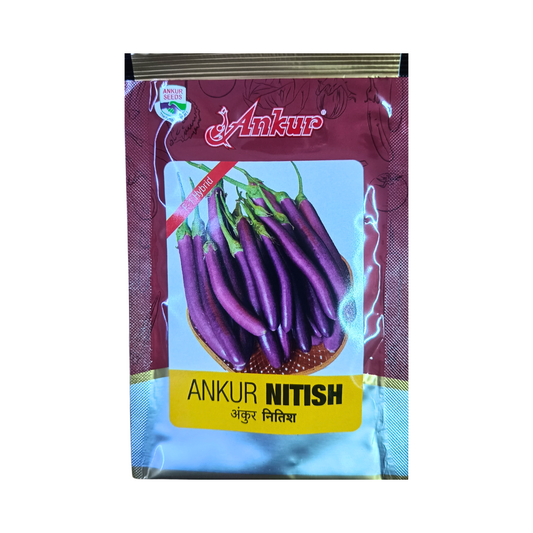 Sold out
Sold out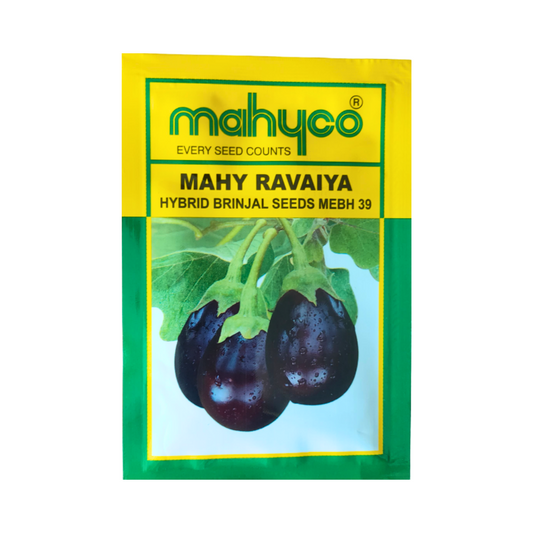 Sold out
Sold out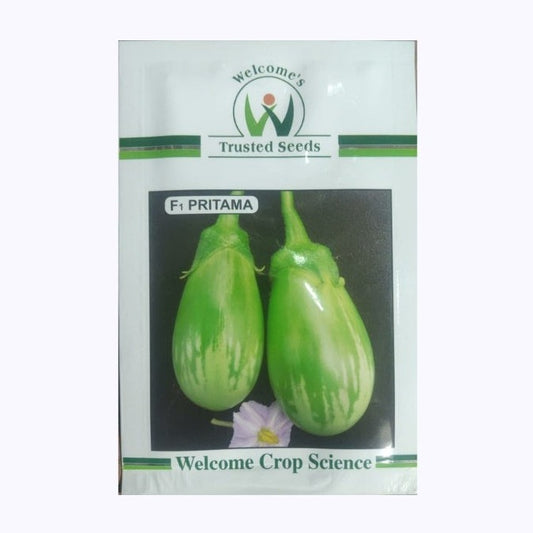

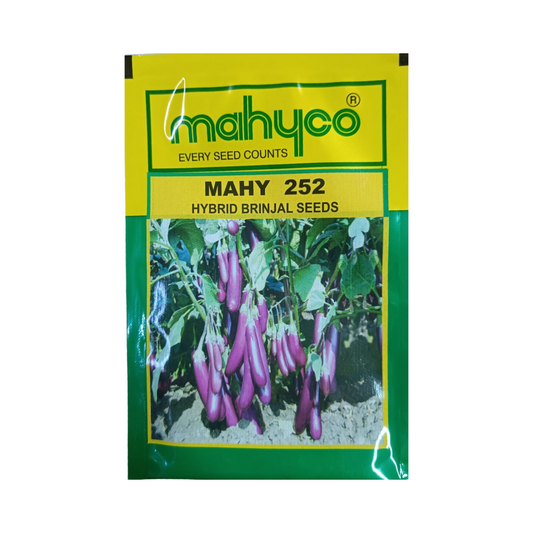 Sold out
Sold out Sold out
Sold out Sold out
Sold out Sold out
Sold out
 Sold out
Sold out Sold out
Sold out Sold out
Sold out Sold out
Sold out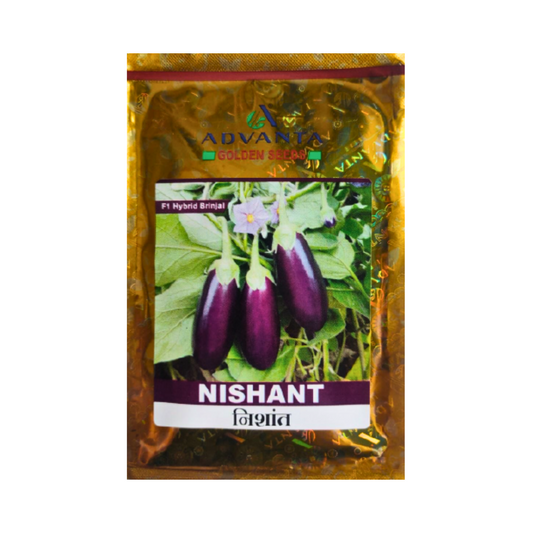 Sold out
Sold out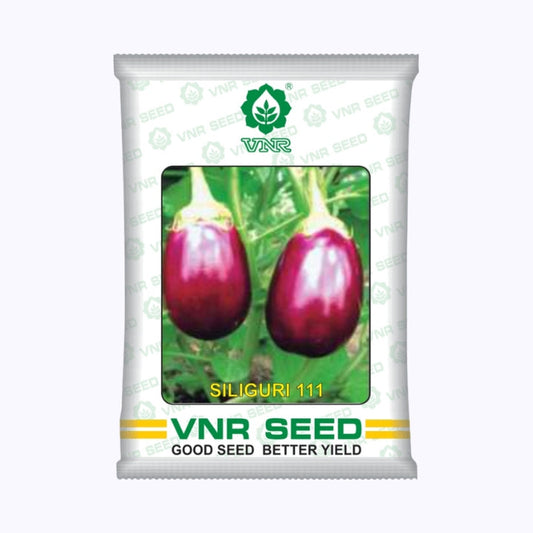 Sold out
Sold out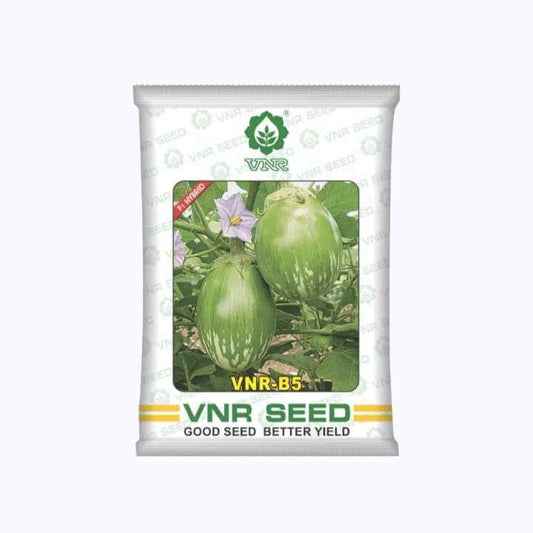 Sold out
Sold out Sold out
Sold out Sold out
Sold out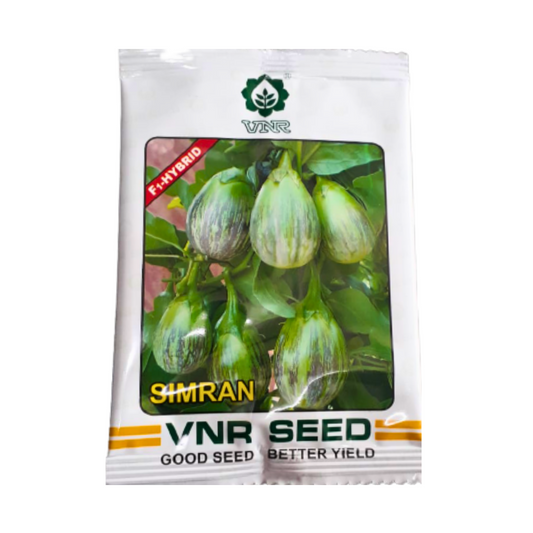 Sold out
Sold out Sold out
Sold out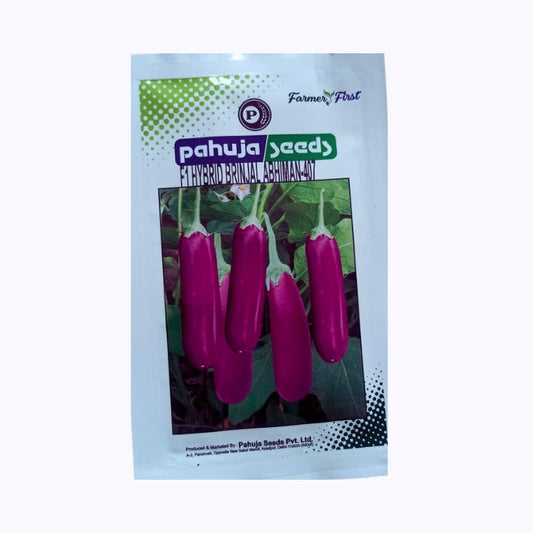 Sold out
Sold out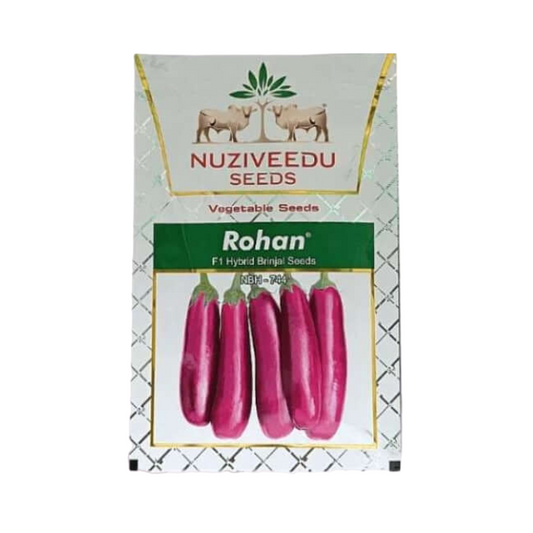 Sold out
Sold out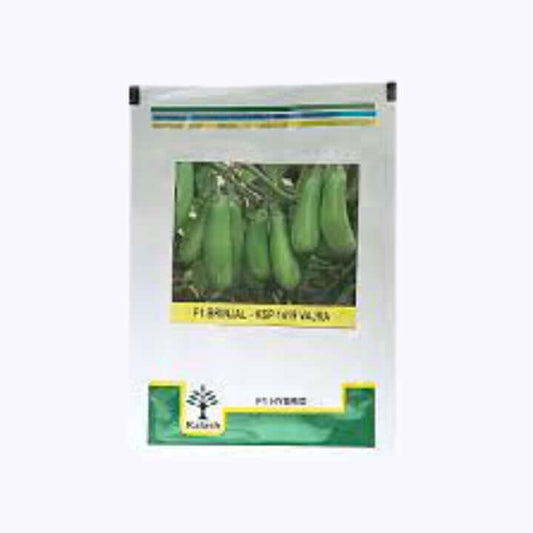 Sold out
Sold out























